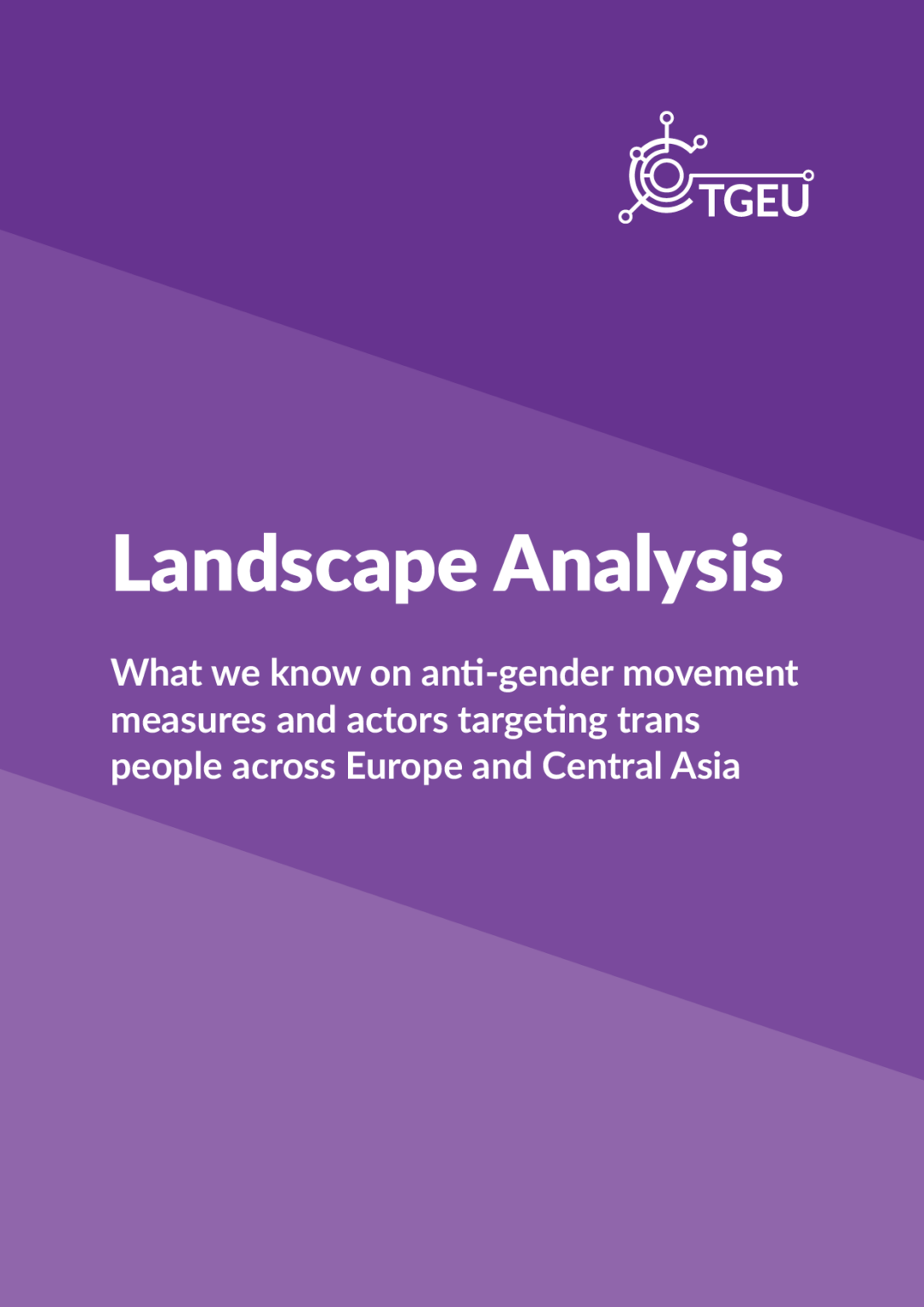TGEU Launches Anti-gender Landscape Analysis

TGEU is launching the report “Landscape Analysis: What we know on anti-gender movement measures and actors targeting trans people across Europe and Central Asia.”
TGEU’s focus on the anti-gender movement comes from a growing concern with recent gains made by these actors against trans rights in Europe and Central Asia, and after observing the increasing interconnectedness of these actors across Europe and to other global regions. This threat to trans rights is coordinated and targeted, and requires a coordinated response.
Why this report?
This report aims at providing an overview of the available literature, public resources, and information tracking how the actors and tactics of the anti-gender movement are targeting trans people. In providing this overview, the report has two objectives.
Firstly, it draws attention to the rise in organised anti-gender and anti-trans actors across Europe and Central Asia as a point of concern for trans organisations, activists, and others working to support trans communities.
Secondly, it identifies gaps and trends in the literature and shares key information on the patterns observed in where and how anti-gender and anti-trans actors are striking; their tactics, connections, arguments, and level of impact. It also highlights gaps in research, knowledge, and publicly-available literature on actors specifically targeting trans people, and the need for greater academic research into these areas.
Who is the report for?
The report’s intended audiences are trans organisations and activists, academics, and others working to support trans communities, including allies and policy-makers.
For trans organisations and activists, this report draws urgent attention to the anti-gender movement and the threat it poses to their work. It also hopes to provide insight to help empower trans communities and organisations to counter these national and regional anti-trans actors and narratives. For the academic audience, it highlights where further research could address literature gaps on anti-trans actors. For policy makers, it provides an overview of anti-gender organising and learning opportunities from comparative national contexts.
What can I find in it?
The analysis is structured in two parts: a summary overview of the trends and patterns of the anti-gender and anti-trans movement (tactics, narratives, funding); and a second part digging deeper into how and why anti-trans organising differs by national context. These findings will be used to better support our member organisations in tackling anti-trans organising in their national contexts and in regional level.
With this progress report, we hope to inspire trans-led organisations and activists to pay closer attention to the actions of the anti-gender movement in their work.
Update: In a previous version of the Landscape Analysis, it was incorrectly mentioned on Page 11 that “…Kyrgyzstan’s parliament approved a 2014 bill criminalising dissemination of LGBTI+ information…“.
Instead, it should read as follows: “For instance, Kazakhstan’s parliament approved a 2014 bill criminalising dissemination of LGBTI+ information…“
We apologise for this error. It has now been corrected in the version uploaded on our website and in the forthcoming Russian translation of the report.